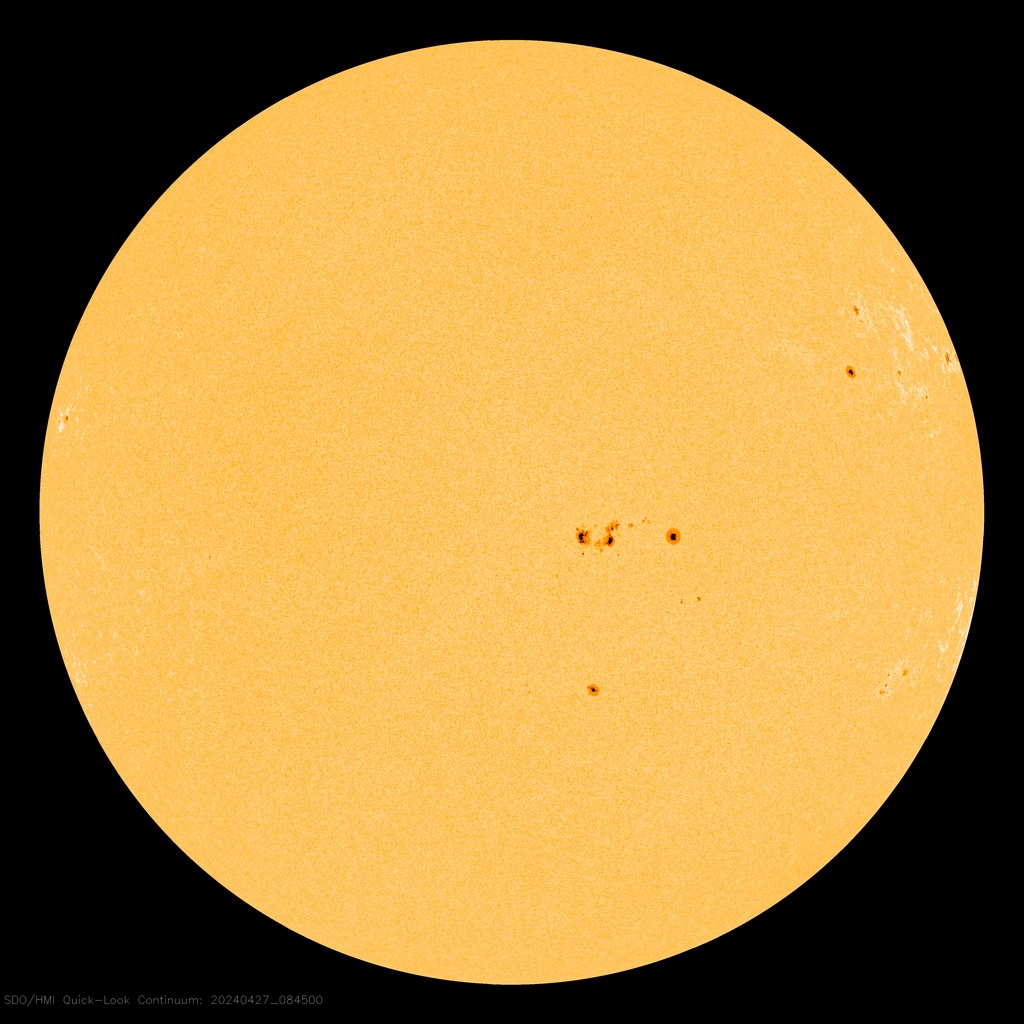Taken by HMI Colorized Intensitygram – Flattened

The above image provides a detailed view of active sunspots currently present. Sunspots are dark, relatively cool areas on the surface of the sun that are characterized by strong magnetic fields. They appear as dark spots on the sun’s surface because they are cooler and less luminous than the surrounding areas. Sunspots typically appear in pairs or groups, and are usually located near the sun’s equator. They are caused by intense magnetic activity in the sun’s surface, which prevents the transfer of heat from the sun’s interior to the surface.
The Solar and Heliospheric Observatory (SOHO) is a spacecraft that was launched by NASA and the European Space Agency (ESA) in 1995. Its main mission is to study the sun and its effects on the solar system. SOHO is located in a halo orbit around the L1 Lagrange point, which is a point in space about 1.5 million kilometers (about 1 million miles) from Earth in the direction of the sun. Being in this position, SOHO always has an unobstructed view of the sun, allowing it to study its activity in unprecedented detail.
SOHO is equipped with a suite of 12 instruments that allow it to study different aspects of the sun. Some of these instruments include:
- The Large Angle and Spectrometric Coronagraph (LASCO), which is used to study the sun’s corona, the outermost layer of its atmosphere.
- The Extreme ultraviolet Imaging Telescope (EIT), which is used to study the sun’s lower atmosphere.
- The Michelson Doppler Imager (MDI), which is used to study the sun’s interior and its magnetic field.
- The Solar Ultraviolet Measurements of Emitted Radiation (SUMER), which is used to study the sun’s upper atmosphere.
SOHO also plays a critical role in space weather forecasting by monitoring the sun for eruptions such as coronal mass ejections (CMEs) and solar flares, which can have a significant impact on the Earth’s environment and satellite-based technologies. SOHO’s observations have led to many important discoveries in solar physics and have improved our understanding of the sun and its effects on the solar system.
The SOHO mission was initially planned for 2 years and it has been continuously operating for more than 25 years, making it one of the longest-lasting and productive solar missions in history.
SOHO continues to make important contributions to our understanding of the sun and its effects on the solar system. Some of its notable achievements include:
- Discovering new types of solar activity, such as “EIT waves” which are large-scale disturbances in the sun’s lower atmosphere.
- Providing the first detailed images of the sun’s corona, which has helped to improve our understanding of the solar wind and its effects on the solar system.
- Making the first measurements of the sun’s interior structure and dynamics.
- Discovering more than 4,000 comets, including many long-period comets that are thought to originate from the Oort Cloud.
- Providing critical data for space weather forecasting, which helps to protect satellite-based technologies and astronauts from harmful solar radiation.
In addition to its scientific achievements, SOHO has also been a valuable tool for education and public outreach. It has provided the public with access to near-real-time images of the sun and has been used in many educational programs to teach about the sun and space science.
It’s worth mentioning that SOHO has had some technical difficulties along its mission, such as communications failures, but the international team of scientists and engineers have been able to recover the spacecraft and continue its operations. SOHO’s mission has been extended several times and it is still operating today, providing valuable data and insights into the sun and its effects on the solar system.
